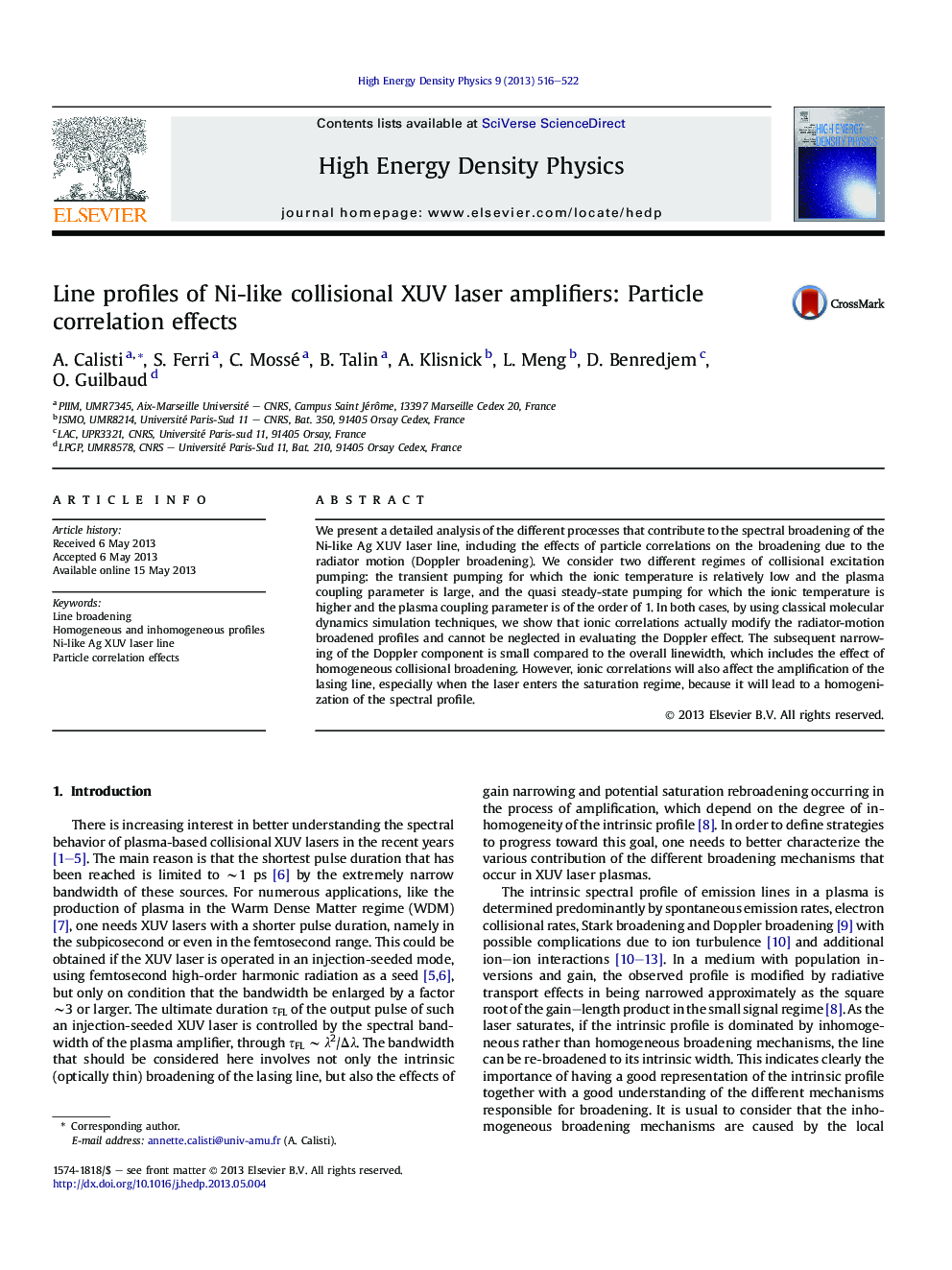| Article ID | Journal | Published Year | Pages | File Type |
|---|---|---|---|---|
| 1772472 | High Energy Density Physics | 2013 | 7 Pages |
Abstract
We present a detailed analysis of the different processes that contribute to the spectral broadening of the Ni-like Ag XUV laser line, including the effects of particle correlations on the broadening due to the radiator motion (Doppler broadening). We consider two different regimes of collisional excitation pumping: the transient pumping for which the ionic temperature is relatively low and the plasma coupling parameter is large, and the quasi steady-state pumping for which the ionic temperature is higher and the plasma coupling parameter is of the order of 1. In both cases, by using classical molecular dynamics simulation techniques, we show that ionic correlations actually modify the radiator-motion broadened profiles and cannot be neglected in evaluating the Doppler effect. The subsequent narrowing of the Doppler component is small compared to the overall linewidth, which includes the effect of homogeneous collisional broadening. However, ionic correlations will also affect the amplification of the lasing line, especially when the laser enters the saturation regime, because it will lead to a homogenization of the spectral profile.
Keywords
Related Topics
Physical Sciences and Engineering
Physics and Astronomy
Astronomy and Astrophysics
Authors
A. Calisti, S. Ferri, C. Mossé, B. Talin, A. Klisnick, L. Meng, D. Benredjem, O. Guilbaud,
